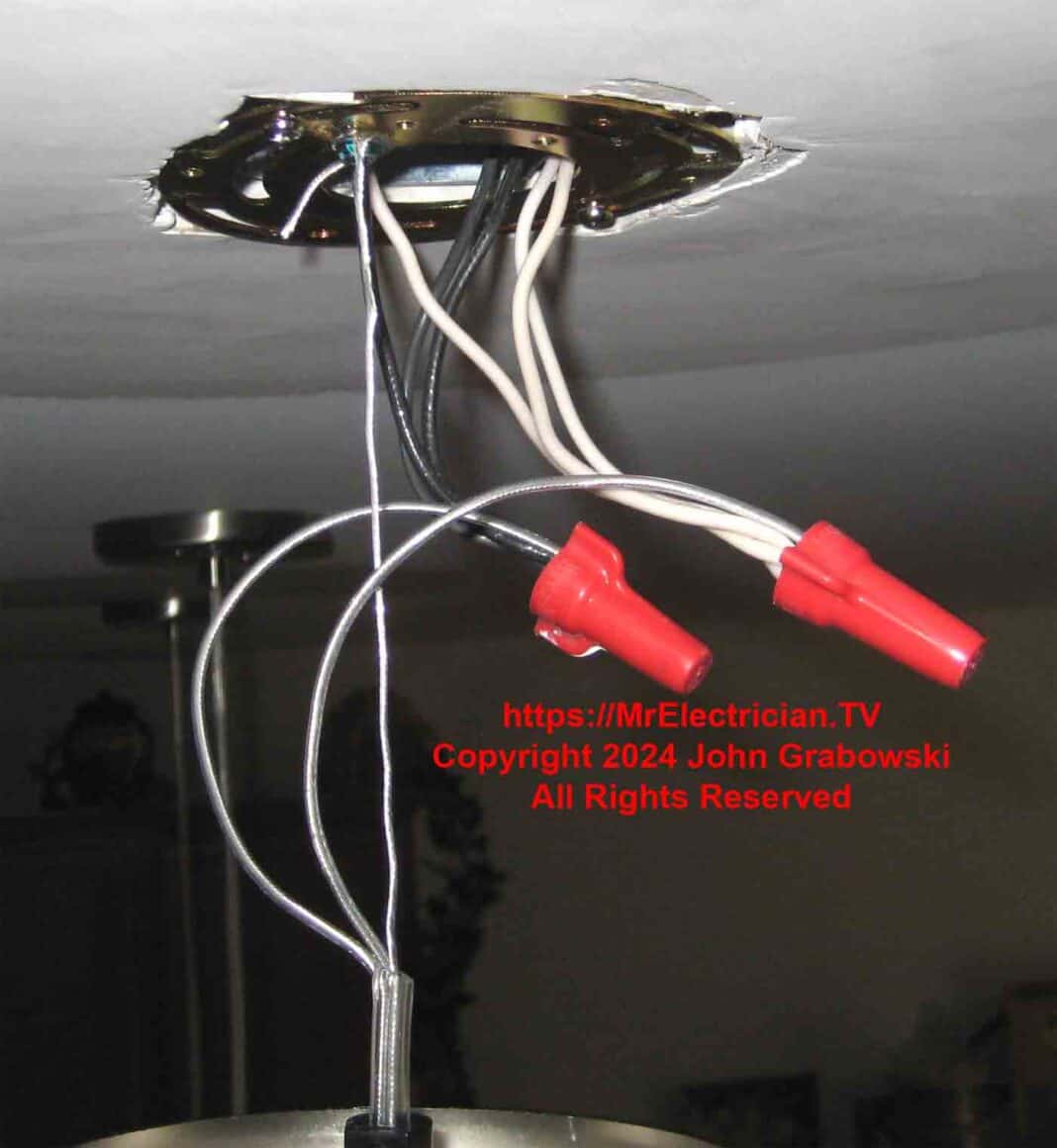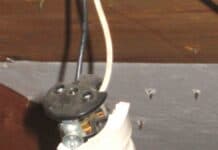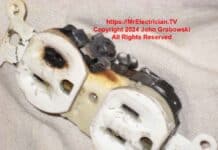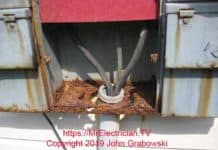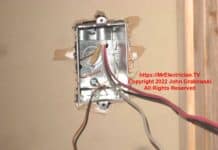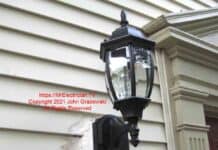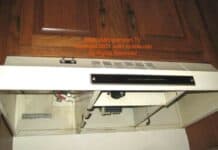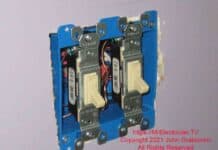Dear Mr. Electrician: Why are my lights flickering? The lights in my house seem to flicker at random times day and night and I can’t figure out the cause.
Answer: Many things can cause the flickering lights. It may take some detective work to narrow it down, an electrician may need to be called in at your expense, to correct the problem. More details below.
NOTE: Some text links below go to applicable products on Amazon. As an Amazon Associate, I earn from qualifying purchases. Using my links helps to keep this website FREE.
Table of Contents:
FLICKERING LIGHTS FIRESTARTER
Lights flickering should be taken seriously as it could be an early warning indicator of a potential fire. Flickering or dimming lights, circuit breakers that frequently trip, or fuses that often need replacement should be investigated.
Arcs, flashes of light, or showers of sparks anywhere in the electrical system can cause a fire. Sizzles and buzzes, unusual sounds from the electrical system, overheating wires that give off an odor of hot insulation, and switch plates or receptacle covers that are hot to the touch, or discolored from heat buildup are indicators of an electrical problem.
Electrical shocks – A shock of any intensity is a warning of an electrical danger.
TABLE LAMPS BLINK
Is it just one table lamp flickering or many lamps in the same room? Is it multiple rooms of lights flickering? Are the ceiling lights or ceiling fan lights also flickering?
If the flickering is in a portable lamp, the problem could be in the lamp socket such as a loose bulb, loose wire connection, bad switch, or a bad lamp socket. The problem could also be a bad plug, loose electrical contacts inside a wall outlet, loose wire connections on the electrical outlet, or loose connections somewhere else on the circuit.
Try plugging the lamp into another electrical outlet on a different circuit. Take notice if the flickering behavior is the same or different. If it is the same then the lamp has the issues causing it to blink. If there is no flickering while plugged into the other outlet, that indicates there is a problem with the original outlet or the wiring feeding the original outlet. See Ceiling Lights below.
Replacing a lamp socket or rewiring a lamp is not that difficult. What can cause it to be tricky to repair is the ornamentation of the lamp which makes it difficult to fish new wires through or replace a socket. Sometimes the old wire can be used to pull the new wire in.
Medium base and mogul base lamp sockets are easier to replace than intermediate and candelabra base sockets. You can just replace the guts on some of the larger lamp sockets. With the smaller sizes, the entire socket must be replaced. You must remove the socket from the base by unscrewing it.
CEILING LIGHTS FLICKERING
Dimmer switch compatibility. If you have dimmer switches installed, ensure they are compatible with the type of light bulbs you’re using. Incompatible combinations can cause flickering or buzzing. Old and defective dimmers can also cause flickering.
Dimmer compatibility has become a common issue with the use of compact fluorescent and LED light bulbs. Read the light bulb package fine print for dimmer compatibility.
With the use of compact fluorescent light bulbs and LED light bulbs the flickering of lights has increased. These light bulbs have electronic components that can cause compatibility issues with dimmers and other electronic controls and are also more vulnerable to heat damage.
A blinking problem may be with the light bulbs themselves. I installed some LED disk lights in my home. A year later they started to blink randomly. They were warranted for five years so I exchanged them and a year later the new ones also blinked. I had to change brands to correct the problem.
Loose wire connections can cause blinking and flickering. Loose electrical connections can be anywhere on the circuit from the power company’s transformer to the light bulb socket itself. Electrical connections can be loose on a wall switch or on the electrical receptacle outlet that feeds the switch, inside the light fixture, on a circuit breaker, or on the neutral terminal bar inside the main electrical panel.
It is possible to have a bad circuit breaker on just one circuit that would cause intermittent blinking.
Like with portable lamps, a light bulb loose in the socket, or a bad light bulb socket will cause blinking.
A blinking or flickering light might simply be due to a bulb reaching the end of its lifespan or becoming loose in its socket.
Overloading circuits with too many appliances or devices can strain the electrical system, leading to voltage drops and flickering lights. Consider redistributing your electrical load or installing additional circuits if necessary.
Rodents can also cause flickering lights by chewing on the wire insulation. Sometimes they get electrocuted in the process. The bare wires can arc together causing heat and sparks in an area you probably cannot see without going into attics or crawlspaces.
If you have unusual electronic devices or appliances in your home, perhaps they are contributing to the lights flickering. Try relocating such devices or using filters to mitigate interference.
Do your neighbors have similar issues? Do the lights briefly dim when you turn on your electric stove, oven, or air conditioner? See the Whole House Blinks below.
THE WHOLE HOUSE BLINKS AT THE SAME TIME
The whole house winking at the same time could very well be indicative of a power company problem. The power company is usually responsible for their power transformers, overhead wires, underground power feeders, inside the electric meter socket, and the electric meter. Some power companies may also service your weatherhead electrical connections.
The main circuit breaker or disconnect switch could also be the cause of the problem but is the responsibility of the property owner to repair, not the power company.
Your neighbor’s air conditioner starting up causes your lights to dim. This could be due to the power company’s transformer being undersized for the neighborhood electrical load.
A large load appliance starts up suddenly, such as an air conditioner, and your lights dim. This could be from having an undersized electrical service, something inside the air conditioner causing this, an undersized power company transformer, or loose electrical connections. A bad main or branch circuit breaker could also cause this.
Other causes of blinking or flickering lights are loose main wire connections inside the main electrical panel, the overhead electric service drop wires rubbing against trees or a house on windy days, broken underground service wire, and extreme weather conditions. Storms or high winds can sometimes lead to power fluctuations or outages, resulting in flickering lights.
Fluctuations in the electrical voltage supplied to your home can cause lights to flicker. This might be due to issues with the power grid or large appliances turning on and off, causing momentary voltage drops.
This is most noticeable when a large appliance such as an air conditioner turns on and the lights blink momentarily. This could be due to an undersized electrical service to your house or an undersized power transformer owned by the power company. If it happens when your next-door neighbor’s air conditioner turns on, it is likely an undersized transformer, but could also be loose connections.
Flickering lights on aging or damaged electrical wiring can be an indicator of a serious problem. It’s a good idea to have your wiring inspected periodically, especially in older homes.
If you experience persistent or severe issues with blinking or flickering lights in your home, consult a qualified electrician to identify and address the underlying cause to ensure the safety and reliability of your electrical system.
Loose connections are concerning because they lead to arcing that generates sparks and heat. Any combustible material could easily ignite from this.

Read my article about burned electrical outlets which can be a cause of flickering lights.
Here is a link to all of my wiring diagrams.
To help keep this website FREE, please use this Amazon link for your purchases. As an Amazon Associate, I earn from qualifying purchases.
Click for a FREE copy of my book “Almost Everything You Need To Know To Repair a Bathroom Exhaust Fan In Your Home.”
Get your required “Emergency Disconnect, Service Disconnect” labels and stickers to satisfy the 2023 National Electrical Code requirements in article 230.85(E)(1) and (2) by going to my Redbubble Shop here.
Visit my Link Tree home page for my social media connections and other links.
